#aquarium corals
Explore tagged Tumblr posts
Text



crochet aquarium
#crochet#ocean life#jellyfish#artists#sculpture#yarn crafts#fish#sea life#angel fish#save coral reefs#aquarium#crafts#decor#sting ray#star fish#sharks
25K notes
·
View notes
Text
There is currently a fad to provide aquariums containing photosynthetic coral holobionts - those corals and anemones harboring photosynthetic dinoflagellates, within their own tissues - with lighting regimes leaning heavily towards the blue wavelength. Many people, for I am not alone in this, dislike the aesthetic created by such lighting, and we think that it obscures details when we are trying to identify objects in the aquarium.
As it happens, the algal symbionts do respond the best to blue and green wavelengths of light. But this alone doesn't explain the aesthetic problem, since our human vision is best attuned to the green wavelengths, though admittedly at the yellowish end of the green light spectrum, rather than the blue. In suboptimal, low light conditions, our eyesight adjusts to become more sensitive to blue wavelengths, but still towards the green end.
Therefore the alien aesthetic now created by many coral aquariums, makes us feel we are in a suboptimal environment for our functioning. But the benign dinoflagellates living within corals and clams, absorb not only violet and blue, but also red wavelengths the best. This is something I feel is overlooked. Macroalgae also make most use of the blue and red wavelengths of light, and the red macroalgae have evolved an improved ability to utilize the green and yellow parts of the color spectrum, relative to green and brown macroalgae.
A word must be said about the use of light wavelengths by undesirable algal colonists, and by the cyanobacteria. These too use the blue and red wavelengths, because they also use chlorophyll to harness sunlight. Given that the photosynthetic organelles of eukaryotic algae - including the dinoflagellates used by corals and clams - are in fact cyanobacteria,it's not surprising the same wavelengths are being used.
Which is not to say that all photosynthetic organisms in our aquaria, are using exactly the same light wavelengths. Two genera of red algae, for example, might be focused on different wavelengths. However the pattern is, broadly speaking, that the availability of light in the blue and red wavelengths, is the baseline prerequisite for photosynthesis.
With this borne in mind, I cannot see why so many reefers are using such heavily blue shifted lighting regimes today. The origin seems to be that during the propagation of scleractinian corals in grow out tanks, a blue shifted spectrum gives new corals a boost of growth that enhances their resilience to mortalities, that result from overgrowth during that critical stage.
I do not see any need to neglect the non-blue part of the wavelength, if it impedes our observation. Which is not merely aesthetic, but pragmatic. So I recommend, for example, one actinic blue tube per one or two coral growth tubes, so that the blue light boosts but does not replace the more visually appropriate light spectrum. Particularly, I see no reason to justify the way some people tend to downplay the fact, that natural photosynthesis using chlorophyll, is a process that also uses red light wavelengths.
Symbiotic coral holobionts possess diel activity patterns, so a day and night period should be provided for them, over the course of 24 hours. This includes the blue spectrum, although it gives a moonlight effect, and nocturnal houses in zoos often employ blue lighting for this reason. This should not be done in the reef aquarium, including any sump or such space where coral and clam holobionts might be being cared for.
#aquarium lighting#wavelengths#photosynthesis#aquarium corals#reef aquariums#blue wavelengths#green wavrlengths#red wavelengths#yellow wavelengths#human vision#macroalgae#algae#tridacna clams
0 notes
Text
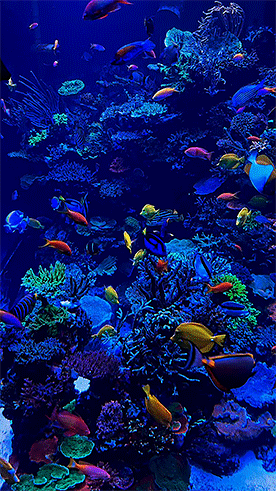

polo_reef on ig
#underwater#fish#stim#sensory#satisfying#mypost#mygifs#aquarium#reef#blue#royal blue#blacklight#coral reef#hands free#handsfree#tropical
21K notes
·
View notes
Text
🎶 Don’t worry about a fin 🐠

🌊����Dive into good vibes with our latest installment of Krill Waves Radio! 🦐🎧



Let the reggae rhythms transport you to colorful coral reefs teeming with tropical fishes. 🐟🐠



Whether you're working from home or chilling at the beach, our aquatic beats are the perfect soundtrack for your sea-esta. 🎶🌊
youtube
#monterey bay aquarium#krill waves radio#soundtrack of the sea#coral reefs and reggae beats#vibing to the motion of the ocean#Youtube
916 notes
·
View notes
Text

aquarium park 🐠🦑🐟
#sonic the hedgehog#sonic#i think aquarium park is one of the most beautifully designed stages to have come out of the sonic franchise#the soundtrack? the vibes? the inspirations? immaculate#that being said this piece took 10 years off my life and made me want to die#stupid fucking coral and garbage ass composition and too much detail in every single element#fuck 3 point perspective i hate 3 point perspective#if i have to work on this any longer i might snap my own fingers
1K notes
·
View notes
Text



Holy woah! Dandy’s world OC!
Here’s my baby Coral!!! I’m working on her interactions still but here’s her ref sheet stuffs!!
And yes. She is in love
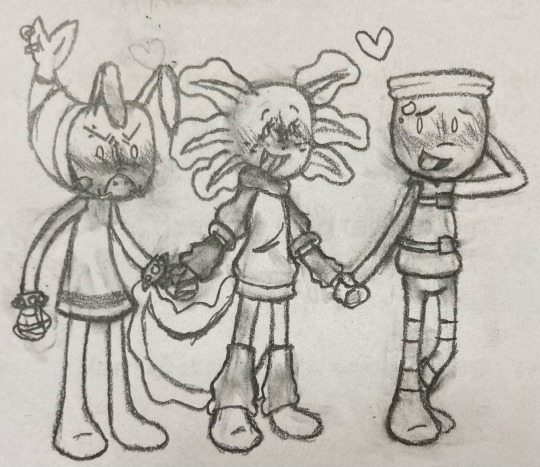
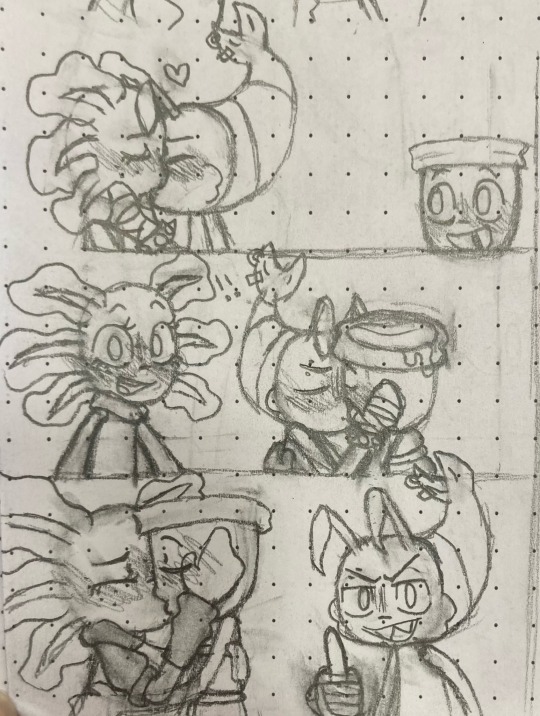
(more doodles of these three out now!!)
#dandys world#my art#dandys world oc#dw oc#my oc#oc: coral the axolotl#dandys world fanart#dandys world finn#finn dandys world#dw finn#finn dw#shrimpo dandys world#dandys world shrimpo#shrimpo dw#dw shrimpo#ragebait#shrimpbowl#shrimpo x finn#finn x shrimpo#canon x oc x canon#finn x coral x shrimpo#their shipname is called aquarium shipping!#aquarium shipping#also i’m still learning how to draw finn#if you couldn’t tell LMAO
169 notes
·
View notes
Text
Are they animals? Are they plants? What exactly are corals and why are they important? Aquarist Jay is today’s guests on Aquarium of the Podcific and takes us to coral school. 👨🏫🪸
Visit pacific.to/podcific to listen, or search “Aquarium of the Podcific” in your favorite podcast app. 🎧
P.S. How many times will we talk about Michael the fish this season? The limit does not exist ✨
221 notes
·
View notes
Text






I found a bunch of pictures I took when I visited aquariums. Totally forgot I had those. Turns out a lot of them are pretty nice so I thought I'd share~
#I love this scorpionfish#It looks so confused#I'm sorry I didn't take note of the species on the other pictures#marine life#marine biology#marine animals#sea creatures#aquarium#fish#cnidarian#jellyfish#scorpionfish#sea anemone#coral#photography#my photos
144 notes
·
View notes
Text









• B l a c k l i g h t A q u a r i u m 2 •
Sources: [ ⭐ / 🫧 / ⭐ -- 🫧 / ⭐ / 🫧 -- ⭐ / 🫧 / ⭐ ]
#stim#stimmy#stimboard#sensory#underwater#aquarium#coral#ocean#water#neon#blacklight#neoncore#glowcore#blue#purple#orange#green#rainbow#fish#fish stim#marine life#marine animals#coral reef#seacore#oceancore#ocean stim#gif#arcade carpet
63 notes
·
View notes
Text









some additional fish (and a coral)
from the incredible LiveAquaria website
#transparent#png#transparent png#transparent pngs#transparent png objects#animals#pngs#png objects#png animals#i know animals aren't objects#fish#tropical fish#marine fish#coral#jellyfish#sea creatures#aquarium#fish tank
214 notes
·
View notes
Text

Trans pride flag I made from beautiful things I found throughout the year (redbubble: https://www.redbubble.com/shop/ap/167517731)
#he speaks#pride flag#trans#trans pride#blue#pink#white#blue skies#blue sky#poppy#melaleuca#coral reef#sea anemone#clownfish#aquarium#ocean
58 notes
·
View notes
Text
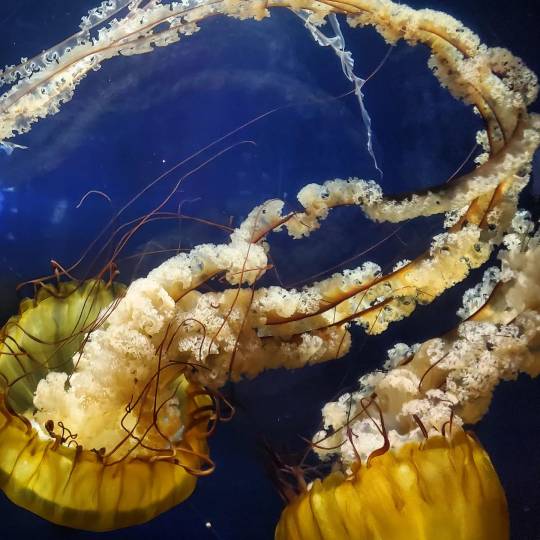


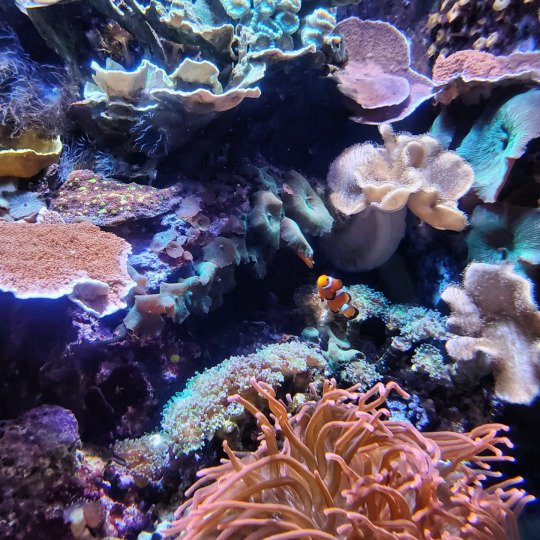


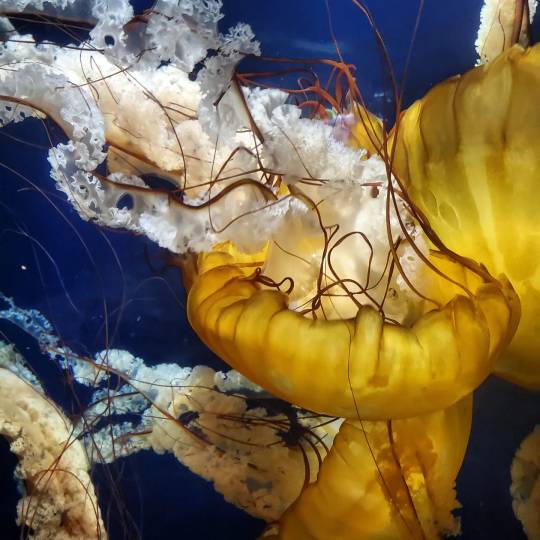
Aquarium of the Bay, SF, CA
#aquarium#jellyfish#fish#eel#animals#aquatic#ocean animals#marine biology#marine life#coral#Aquarium of the Bay
240 notes
·
View notes
Text
One of the popular corals encountered in the aquarium trade is Duncanopsammia axifuga, traded as the Duncan coral or as the 'dunk', but known more formally as the whisker coral. I can remember when this Australasian coral was but sporadically imported, and had a reputation as a rare novelty. But nowadays it has become a well admired and staple species in our reef aquariums. Curiously D. axifuga is not a well studied animal in the wild, where it is usually regarded as uncommon. This is due to a lack of interest in studying corals from its natural habitat.
D. axifuga colonies possess large polyps that are 2 to 3 centimeters across, or about an inch, and these in turn possess such long feeding tentacles, that the visual appearance of their skeleton is easily obscured. The branching form of D. axifuga skeletons favors the fragmentation and survival of their colonies, which may grow either attached to hard substrates, or be free living on sand. Growing on sand helps this species to avoid competition with other, more aggressive stony corals in nature. Like other corals of this growth habit, D. axifuga skeletons that allow them to propagate by natural fragmentation.
Confusion exists as to where D. axifuga might be found in the wild, because they are easily confused with related genera of corals. Usually colonies are found at depths below 20 meters, but they can reportedly be present even in the intertidal zone. Uncertainty surrounds the identities of supposed D. axifuga colonies that have been reported from the South China Sea, Malaysia, and even Mayotte in the Indian Ocean. Although corals from deeper waters and soft sediments are relatively poorly understood, D. axifuga appears absent from surveys of appropriate habitats in the Gulf of Thailand, and this coral is thus likely to be a true Australasian endemic.
The key to understanding D. axifuga in the aquarium, is that they naturally occur where the water is turbid, with only limited light penetration. These corals do not like bright lighting, and they also need only low to medium flow. Unlike corals from shallow lagoon habitats, which have similarly turbid water and soft bottoms, D. axifuga are not hardy when they are exposed to unstable temperatures, nor to high temperatures above 26 degrees centigrade.
Although these corals do harbor and make use of photosynthetic symbionts, and therefore require some daytime lighting, D. axifuga are responsive to targeted feeding with finely chopped meaty items, or preparations for zooplanktivores. Towards other ornamental corals, they are not especially aggressive, and they are prone to lose out when they are in direct competition, for which reason care should be taken when siting them in the aquarium.
#Duncanopsammia axifuga#Duncan coral#whisker coral#aquarium corals#stony corals#long polyp stony corals#LPS
0 notes
Text
We have new deep-sea cauliflower coral in the Into the Deep/En lo Profundo exhibit!
From @mbari-blog’s ship, the R/V Rachel Carson, our team collected these salmon-colored deep-sea corals half a mile below the surface of Monterey Bay.
These deep-sea denizens now stand tall, fanning their branches and captivating people with a glimpse of the depths of our underwater world. Follow along to find out what else we found in the deep!
1K notes
·
View notes
Note
could I please request an aquarium stimboard please?/nf






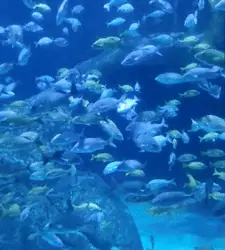


•◌•◌•◌•◌•◌•◌•★•◌•◌•◌•◌•◌•◌•
Aquarium Stimboard
Request for @solonelx
Note ; I love aquariums sm mrjnrz
🌊-🐠-🌊
🦈-🪼-🦈
🌊-🐠-🌊
•◌•◌•◌•◌•◌•◌•★•◌•◌•◌•◌•◌•◌•

#autism#stim blog#actually autistic#stim#age regression#stimming#stimboard#visual stim#stimblr#stim gifs#aquarium#fish stim#shark stim#jellyfish stim#stingray stim#turtle stim#ocean stim#ocean animals#sea stim#ocean#sea#aquatic#aquatic animals#aquarium stim#shark stimboard#jellyfish stimboard#fish stimboard#turtle stimboard#coral stim#marine life
25 notes
·
View notes
Text
Ok i’m working on some hella angst right now so before I shoot everyone in the vicinity 47 times i’m gonna share my wholesome Aquarium Shipping comic thing!









bonus: headcanon boxten design because I LOVE HIM AAAAAGH

#rorys doots#dandys world#dw#dandys world fanart#dw fanart#dw shrimpo#shrimpo dw#shrimpo dandys world#dandys world shrimpo#finn dw#dw finn#finn dandys world#dandys world finn#finn x shrimpo#shrimpo x finn#ragebait#shrimpbowl#aquarium shipping#dandys world oc#dw oc#oc: coral#finn x coral x shrimpo#this was technically drawn yesterday LMAOOO#i’ve drawn finn more since (you’ll have to wait and see) and i think i’ve improved
83 notes
·
View notes